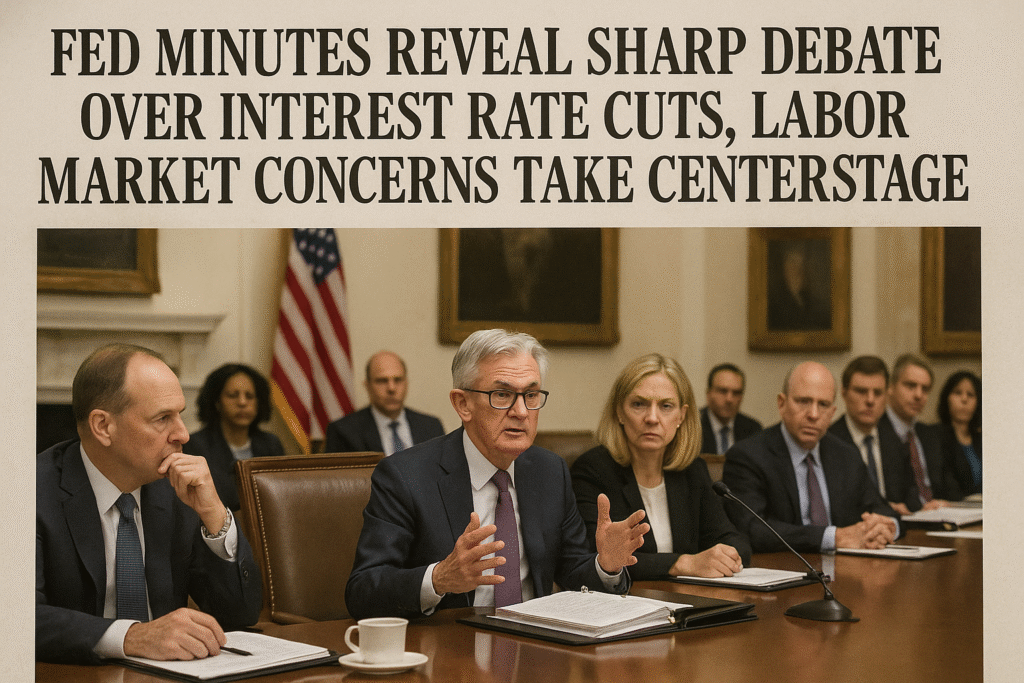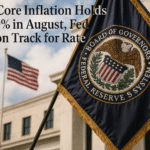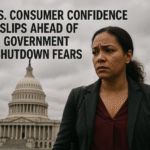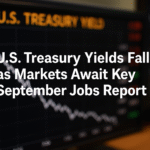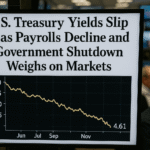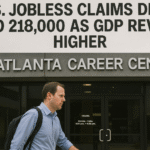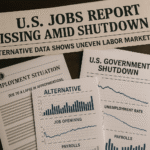By Harshit Washington, D.C., 9 OCTOBER , 2025 – 8:30 AM EDT
Federal Reserve policymakers in September were strongly inclined toward further interest rate cuts, though the details of how many remain up for debate, according to minutes of the latest Federal Open Market Committee (FOMC) meeting released Wednesday.
The summary revealed near unanimity that the central bank’s benchmark rate needed to move lower to support the economy. However, members diverged on the pace of cuts: some favored two additional reductions by year-end, while others pushed for three, highlighting a rare split among top officials at a time of heightened economic uncertainty.
A Narrow Majority for Two Cuts
The so-called “dot plot” of officials’ projections showed a razor-thin divide: 10 participants anticipated two more quarter-point cuts before the year closes, while nine leaned toward a more aggressive stance.
The September 16–17 meeting resulted in an 11-1 vote to lower the federal funds rate by 0.25 percentage points, taking it to a target range of 4% to 4.25%. Longer-term projections suggest further modest reductions in 2026 and 2027, before stabilizing near 3%.
But newly appointed Fed Governor Stephen Miran, attending his first meeting, broke ranks. He favored a half-point cut and argued for a faster path of easing, making him the lone dissenter in the official statement.
Concerns Over Jobs and Growth
The debate was driven largely by worries about a softening labor market. The minutes revealed that most officials saw “downside risks to employment” increasing over recent weeks, even as inflation pressures appeared to moderate.
“Participants generally noted that their judgments about this meeting’s appropriate policy action reflected a shift in the balance of risks,” the minutes stated. With hiring slowing and layoffs creeping higher in certain industries, officials said it was appropriate to push policy closer to a neutral stance.
Still, not everyone was convinced. Some participants argued financial conditions remained relatively loose, suggesting the Fed should tread carefully before committing to additional cuts.
Inflation, Tariffs, and the Trump Factor
Inflation risks, while still present, were seen as less threatening than earlier in the year. Policymakers debated the impact of President Donald Trump’s tariffs, which have raised prices in the short term but were not expected to fuel lasting inflationary pressures.
Tariffs on imported goods — from steel to consumer electronics — have become a central theme in the Fed’s outlook. While officials acknowledged they added complexity to price forecasts, most concluded they did not fundamentally alter the trajectory toward the Fed’s 2% inflation target.
Market Expectations Align
The Fed’s internal split mirrored views on Wall Street. A survey of primary dealers conducted before the meeting found that “almost all” expected a quarter-point cut in September, while about half predicted two additional moves by year-end. Markets, too, are betting heavily on cuts in both October and December, with futures pricing suggesting near certainty.
Still, Fed officials stressed flexibility. “In considering the outlook for monetary policy, almost all participants noted that, with the reduction … the Committee was well positioned to respond in a timely way to potential economic developments,” the minutes noted.
The Shutdown Complication
Adding to the uncertainty is the ongoing government shutdown, which has disrupted the flow of critical data. With the Labor Department, Commerce Department, and other agencies shuttered, the Fed is unable to access up-to-date figures on employment, inflation, and consumer spending.
If the shutdown continues through the October 28–29 FOMC meeting, officials may be forced to make decisions with limited visibility, a situation some described as “flying blind.”
The absence of data could weigh heavily, especially as markets look for clarity on the Fed’s end-of-year path.
Looking Ahead
For now, the balance tilts toward easing, with the labor market emerging as the key driver of policy. But divisions within the Fed underscore the uncertainty surrounding the economy heading into late 2025.
As Miran and other officials debate whether to act more forcefully, the Fed faces the challenge of sustaining growth without reigniting inflation — all while navigating the political and fiscal fallout of a prolonged government shutdown.
The next meeting in late October may prove pivotal, determining not only the trajectory of interest rates but also the Fed’s credibility in balancing its dual mandate of stable prices and maximum employment.

